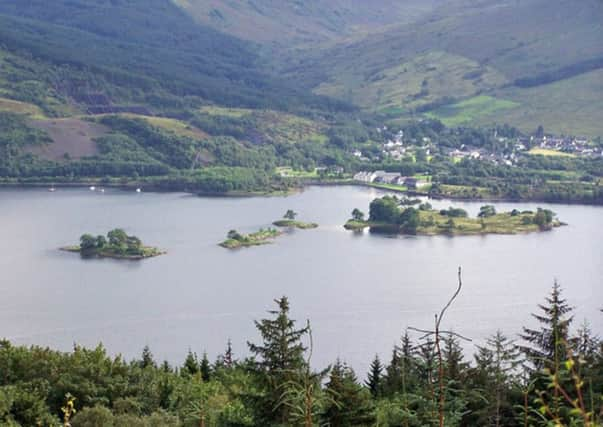The Scottish island where Highland clans buried their dead


For hundreds of years, the island was where clans in this part of the Highlands took their dead to rest in peace.
Found in the waters of Loch Leven surrounded by the mighty landscape of Glencoe, it was a revered resting place for generations.
Advertisement
Hide AdThe last person to be buried here was in 1972, when a Glencoe woman who moved to London requested she be returned home when the time came.
The Camerons of Callart, the MacDonalds of Glencoe and the Stewarts of Ballachulish and Ardsheal all voyaged to the island for burials.
Even when they were at conflict with each other, Eilean Munde remained a place of peace and sancity with the clans sharing the maintenance of the place.
Different clans had different ports on the island where they arrived with bodies - and sometimes soil - for burials.
The Macdonalds of Glencoe used the Port of the Dead which faces Ballachulish, according to research by the Glencoe Heritage Trust.
Among the Macdonalds said to be buried on the island are Alastair MacIain, 12th Chief of Glencoe, who was killed during the massacre of 1692.
Advertisement
Hide AdHe earlier travelled to Fort William to swear loyalty to William II and was then sent on to Inverary to sign the pledge on behalf of his sept, missing the deadline given the extra journey.
Despite assurances at Fort William that McIain would be protected, steps were taken to “root out the damnable sept” as part of a broader campaign to dismantle the power of the clans with the massacre launched on February 13.
Advertisement
Hide AdThere are at least 300 graves on Eilean Munde, with Big Duncan MacKenzie another fabled figure buried here.
He was a Jacobite fighter from Ballachulish who fought alongside Cameron of Lochiel at Battle of Prestonpans in September 1745.
He is remembered for slicing through the helmet and head of a British Government dragoon with the event depicted on his gravestone.
Ros MacDonald, secretary of Glencoe Heritage Trust, earlier recorded all the visible graves on Eilean Munde along with her son, Alexander, who later wrote a book on the island’s past.
She said: “It is a lovely little island. There are over 300 graves on the island at least. That is what we were able to record.
“When you go out to the island you are looking at it really as it was hundreds of years ago. It is a place that will be there for ever.
Advertisement
Hide AdThe last person to be buried on the island was Christina MacDonald Sharp, who was born in Glencoe and moved to London as a young woman.
However, she maintained strong connections with Glencoe and was returned home following her death in 1972.
Advertisement
Hide AdMs Macondald said: “She would come up to Glencoe and break into Gaelic straight away.
“She wanted to be buried on the island. She wanted to be buried among her ancestors.”
No more burials are allowed on the island, given the lack of soil that can be found there, although it is people do travel there to scatter the ashes of loved ones.
The island was named after St. Fintan Mundus who arrived there from Iona in the 7th Century.
The parish church on Eilean Munde was destroyed by fire in 1495, rebuilt in the 16th Century and last used in 1653, according to accounts.
Next to Eiliean Munde is Eilean na Comhairle - or Isle of Discussion - where neighbourhood conflicts would be settled.
After rows were resolved, it is said that a fire would be lit to let people know that calm had been restored.
